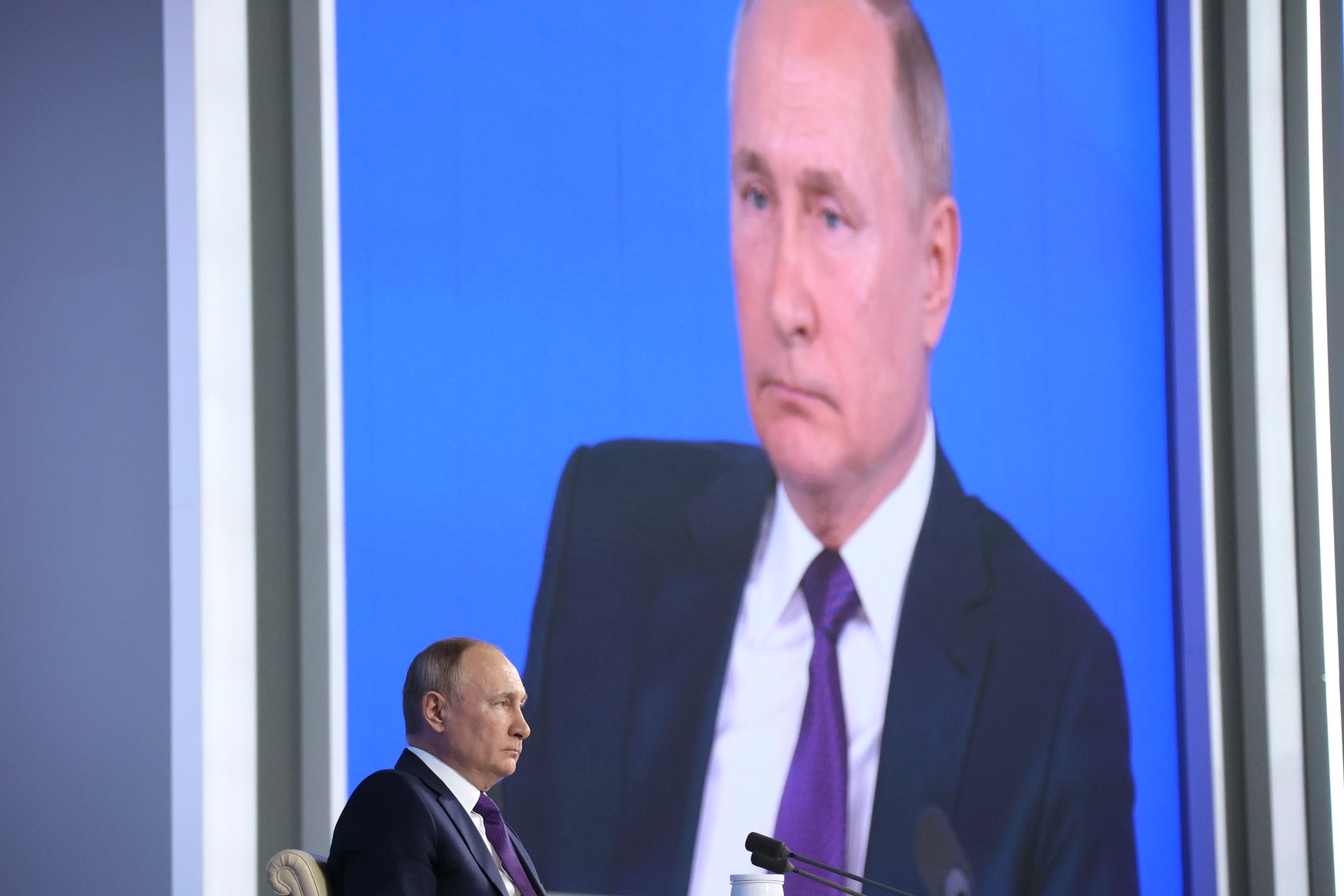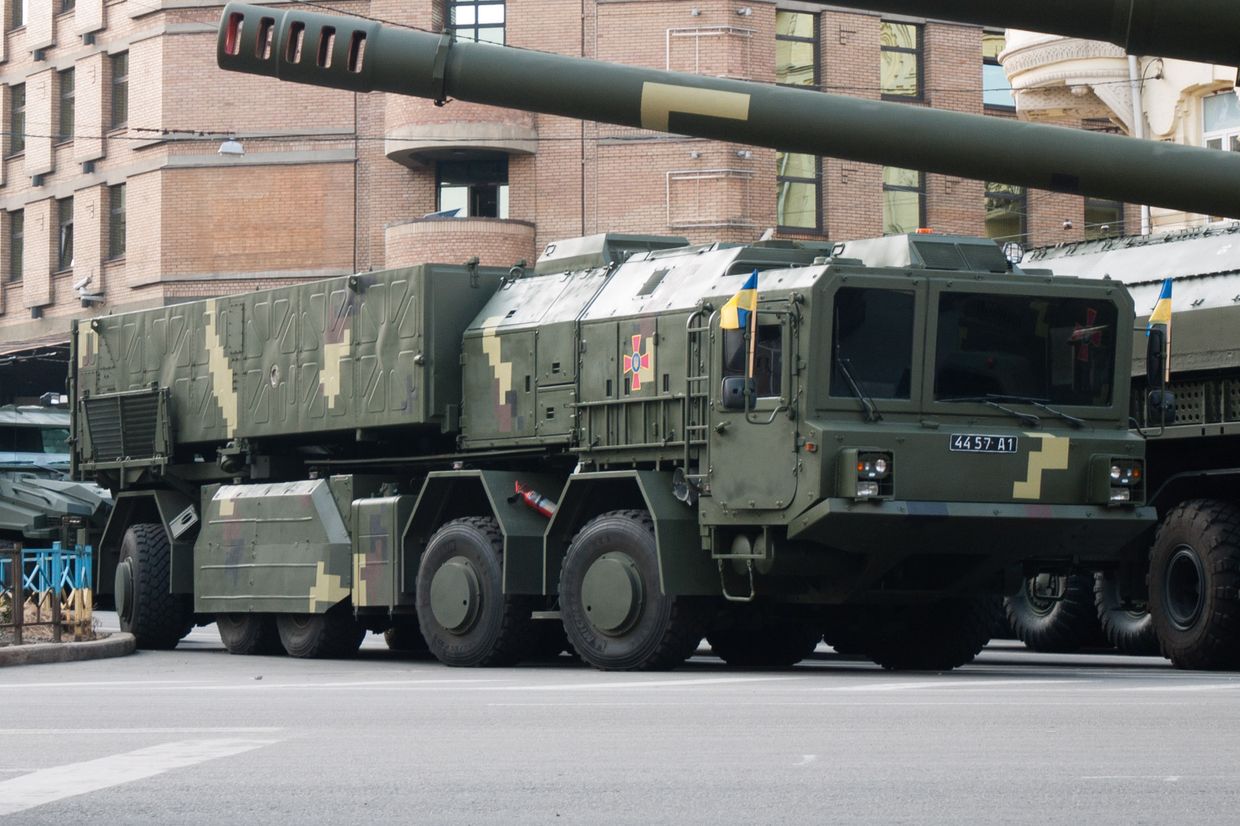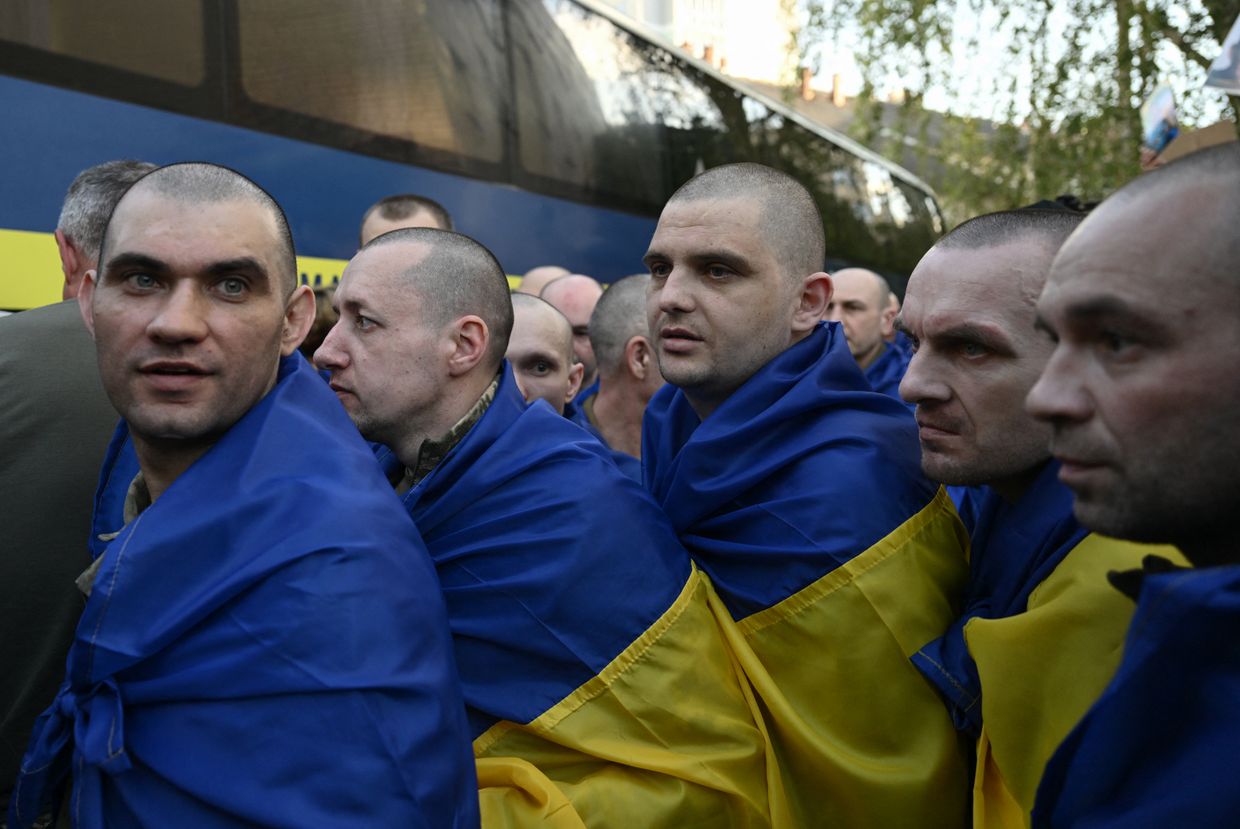On Dec. 23, Russian President Vladimir Putin held a five-hour press conference about the state of his nation.
One of the subjects raised by Russian and foreign journalists was Moscow’s buildup of 122,000 troops within easy striking distance of Ukraine’s border. Putin was asked if he would invade Ukraine, about the state of his talks with the West and the security guarantees that Russia sought or would be willing to give.
Putin stuck to his usual rhetoric of blaming Ukraine and the West for Russia’s actions. He also said some things about Ukraine that are either distortions or have no basis in fact.
The Kyiv Independent has collected some of Putin’s statements from the press conference and held them up to scrutiny.
Was Ukraine Lenin’s creation?
Putin said that Ukraine was created in its current form by Soviet leader Vladimir Lenin in the 1920s.
“Let’s not forget how Ukraine was established,” Putin said. “Who created it? Vladimir Lenin, who was creating the Soviet Union. The Union agreement in 1922 and the constitution in 1924. True, that was after his death, but it was created according to his principles.”
What actually happened:
Amid the chaos of World War I, the Russian Revolution and their aftermath, the land that is now Ukraine was fought over and controlled by over half a dozen armed factions, including the Red and White armies, the Ukrainian People’s Republic led by Mykhailo Hrushevsky, the German-installed Hetman Pavlo Skovropadsky, and later the Directorate that revolted against him.
Russia eventually conquered much of the territory, which was made into the Ukrainian Soviet Socialist Republic, a founding member of the Soviet Union.
Historian Yaroslav Hrytsak said that Lenin needed Ukraine to be the shape it is because he knew the Bolsheviks would not be able to maintain power if they didn’t compromise with the powerful nationalist movements.
As such, it’s not Lenin’s principles that shaped Soviet Ukraine but necessity. Lenin was known to have said that the expression of the will of the people in Ukraine could not be ignored, according to Hrytsak.
Was Ukraine an unnatural entity into which the ‘Russian’ Donbas was awkwardly crowbarred by Lenin?
Putin’s rhetoric that the now Russian-occupied Donbas and Crimea are basically Russian and need protection from Ukraine extends back to the 1920s.
"The Donbas... even during the organization of the Soviet Union, thought of itself in no other way besides as part of Russia,” Putin said. “But Lenin and his comrades pushed it [into Ukraine] by force. At first they wanted to add [Donbas] to Russia but then said 'we should reconsider.'"
What actually happened:
Hrytsak says that Lenin “thought that Ukraine should have ethnic borders.” The Donbas was Ukrainian, which was defined by its ethnic population. And the Donbas was majority Ukrainian by the end of the 19th century, Hrytsak said. The fact that many of the people spoke Russian did not make them any less Ukrainian.
Several experts told the Kyiv Independent that Putin is confusing language with ethnicity by treating them as one and the same. This is a pre-Soviet Imperial Russian view, said Olexiy Haran, a comparative politics professor at Kyiv Mohyla Academy.
Haran pointed out that Lenin warned about the dangers of Russia’s “chauvinism” while saying that the nationalism of oppressed nations like Ukraine could be progressive.
But that was then. What about now? Is Putin defending people who basically consider themselves Russian and believe they are threatened by Ukraine?
Putin said that when the Soviet Union collapsed, “part of the historical Russian territories with the population of historical Russia ended up outside the Russian Federation, primarily in Ukraine, but we made peace with that.”
But when a “violent uprising” took place, Russia had “no choice” but to come to the defense of the people living in the Donbas and Crimea.
Putin added that Ukrainian “extremists” may be planning operations to retake Crimea and the Donbas.
What actually happened:
The Donbas was colonized by Cossacks followed by peasants fleeing from the Polish-Lithuanian Commonwealth. Over the course of the 19th century it became an industrial center of Tsarist Russia. It was an ethnic melting pot with a Ukrainian majority that remained to this day.
As for independent Ukraine, continuous nationwide surveys found that the Donbas residents saw themselves as Ukrainians and wanted to remain part of Ukraine, Hrytsak said. Soon after Russia invaded the Donbas in eastern Ukraine in 2014, Pew Research Center found that 70% of eastern Ukrainians polled in favor of national unity, including 58% of those who spoke Russian.
According to another 2014 study conducted by the Ilko Kucheriv Democratic Initiatives Foundation, 58% of the surveyed Donbas region residents wanted it to be part of Ukraine.
“Separatist attitudes weren’t characteristic,” said Hrytsak. “It’s very important to understand that despite the Russian language, Russian ethnicity was weakly expressed.” He said the locals primarily had local identities such as “Donetsk native” or “worker.”
Crimea changed hands numerous times throughout history and especially during the Russian civil war. The Soviet period saw the massive deportation of Crimean Tatars from their ancestral homes in the peninsula. The death toll during the deportation was high. Crimea was incorporated into Soviet Ukraine in 1954 due to the "commonality of the economy, proximity and close economic and cultural relations" between it and the Ukrainian SSR. Tatars were eventually permitted to return only 45 years after being deported in 1944. Since 2014, they have faced persecution in Russian-occupied Crimea.
Putin said that by illegally invading and occupying Crimea and Donbas, it was defending people in those regions from the “bloody coup” of 2014, when the EuroMaidan Revolution ousted former pro-Kremlin President Viktor Yanukovych. Putin claimed that Yanukovych was ready to step down voluntarily if the people were dissatisfied with him.
In fact, the blood that flowed through the streets of Kyiv were caused by Yanukovych’s infamous riot police, who attacked peaceful protesters, gunning down over 100 and injuring hundreds more. Yanukovych was trying to cling to power to ensure that Ukraine does what the Kremlin wants and terminates its Westward drift towards the European Union.
While Putin spoke emotionally about the plight of the Donbas residents, this plight is caused by Russian-led militants, which maintains a blockade on the residents, keeps prisons where the militants torture arbitrarily arrested people and commit other human rights violations.
The Kremlin began handing out Russian passports to people in Donbas over the past several years, to have a greater excuse to jump to their “defense.”
Did NATO break its 1990s promises not to expand eastward?
Putin became heated, saying Russia’s hand was forced by NATO deploying missiles right on its doorstep. Putin claimed that NATO gave Russia guarantees that it would not expand to the east. He said the alliance betrayed that promise with five waves of expansion.
The Russian president referred to a statement by U.S. Secretary of State James Baker reportedly made to former Soviet leader Mikhail Gorbachev in 1990 that NATO will not move “one inch” eastward. In the same year, NATO Secretary General Manfred Woermer was quoted as saying "the very fact that we are ready not to deploy NATO troops beyond the territory of the Federal Republic [of Germany] gives the Soviet Union firm security guarantees."
What actually happened:
Gorbachev told German newspaper Bild that the West "could have done more" to honor its commitment to Russia, in light of the "not one inch" comment. But in a different interview, he said that NATO’s expansion to Warsaw pact countries had never come up during his discussions.
Mark Kramer, director of the Cold War Studies Project at Harvard University, who reviewed declassified transcripts, said the same thing. The discussion revolved specifically around NATO forces in East Germany, according to Steven Pifer, a U.S. diplomat.
NATO Secretary General Jens Stoltenberg said that the alliance never promised not to enlarge and that it was its founding principle that any European country can choose its own path or join.
NATO has steadily added more and more members. In 1999, the Czech Republic, Hungary and Poland joined NATO. Bulgaria, Estonia, Latvia, Lithuania, Romania, Slovakia and Slovenia joined in 2004. Albania and Croatia became members in 2009, followed by Montenegro in 2017 and North Macedonia in 2020.
Gorbachev’s successor Boris Yeltsin later felt deceived when the U.S. moved its position from only adding “partners” to continuing to add new members. Yeltsin felt NATO violated “the spirit” of the agreement. Both he and Putin saw the expansion as a threat.
Even so, Haran pointed out that some of Russia’s neighbors wanted to join NATO mainly due to the threat from Russia. It was the same with Ukraine, which until recently had been content to be non-aligned. It was Russia’s invasion that made many Ukrainians understand that they needed the protection only NATO could offer, he said.
Does Kyiv sponsor radical movements to cause violence in Donbas and Crimea? Does it order troops to fire on Donbas?
Putin accused Kyiv of the above, as well as broadcasting propaganda to “brainwash” residents into anti-Russian views.
What is actually happening:
The Russian president seems to be fond of accusing his opponents of doing what he does. Violence by Russian-sponsored authorities in the self-proclaimed Kremlin-led Donetsk and Luhansk People’s Republics is endemic.
Putin said “ask the current political leaders of Ukraine about how they give orders to shoot at Donbas on a daily basis.”
In fact, it’s Russian-led militants who open fire against Ukrainian positions on a near-daily basis, in spite of the cease-fire declared by both sides in July 2020. Over 80 Ukrainian soldiers have been killed since then. The Organization for Security and Co-Operation in Europe repeatedly praised Ukraine’s posture of restraint.
As for propaganda, children in occupied Donbas swallow pro-Kremlin propaganda on a daily basis. Ukraine is no longer mentioned in their textbooks, except when accompanied by the terms “Russophobia” and “neo-Nazism,” popular on Russian TV.
Kids living under occupation can no longer study Ukrainian literature, language, or history. All have been replaced with Russia-related content or social studies about the so-called “People’s Republics of Donetsk and Luhansk” – the names used by the Russia-controlled occupation authorities.
Russia is also using threats of “radicalism” to make arbitrary detentions of Crimean Tatars on the peninsula.
Is Ukraine the one failing to meet the Minsk peace agreements?
Russia has recently been accused by Ukraine of trying to kill the Minsk peace talks organized in 2015.
Putin responded by blaming Ukraine’s supposed intransigence, saying that it refuses to allow more autonomy to Donetsk and Luhansk, including local elections and grant amnesty to people who were involved in the fighting in those regions.
Finally, Putin said that “in accordance with the Minsk agreements, Russia is an intermediary but they’re trying to make us into a side in the conflict.”
What actually happened:
The Minsk-2 agreement was signed in February 2015. Given Russia's dominance in the recent fighting, the document significantly skewed towards Russia. It does call for an amnesty for those involved in the fighting, creation of a "special status" for the disputed areas, giving Donetsk and Luhansk the right to more autonomy.
According to think tank Chatham House. "Implementation of these measures would in effect destroy Ukraine as a sovereign country. The DNR and LNR would be reincorporated into Ukraine but as distinct political, economic and legal entities tied to Russia – thus introducing a constitutional Trojan Horse that would give the Kremlin a lasting presence in Ukraine’s political system and prevent the authorities in Kyiv from running the country as an integrated whole.”
Nevertheless, Ukraine is willing to implement the Minsk agreements but in a certain order -- starting with Russian withdrawal, followed by free elections and the securing of state borders before granting special status. Russia wants it the other way around.
Special status may further unravel Ukraine if other regions seek similar powers. Also, it would let Donetsk and Luhansk prevent Ukraine from joining the EU and NATO.
Furthermore, the document, while signed by Russia's ambassador to Ukraine, does not mention Russia, giving the Kremlin an excuse to promote the fiction that it's a negotiator and not a belligerent.
And Russia is belligerent. The Kremlin trains, commands and funds the military formations in occupied areas and its claim of being an intermediary has been roundly rejected by countries around the world.













